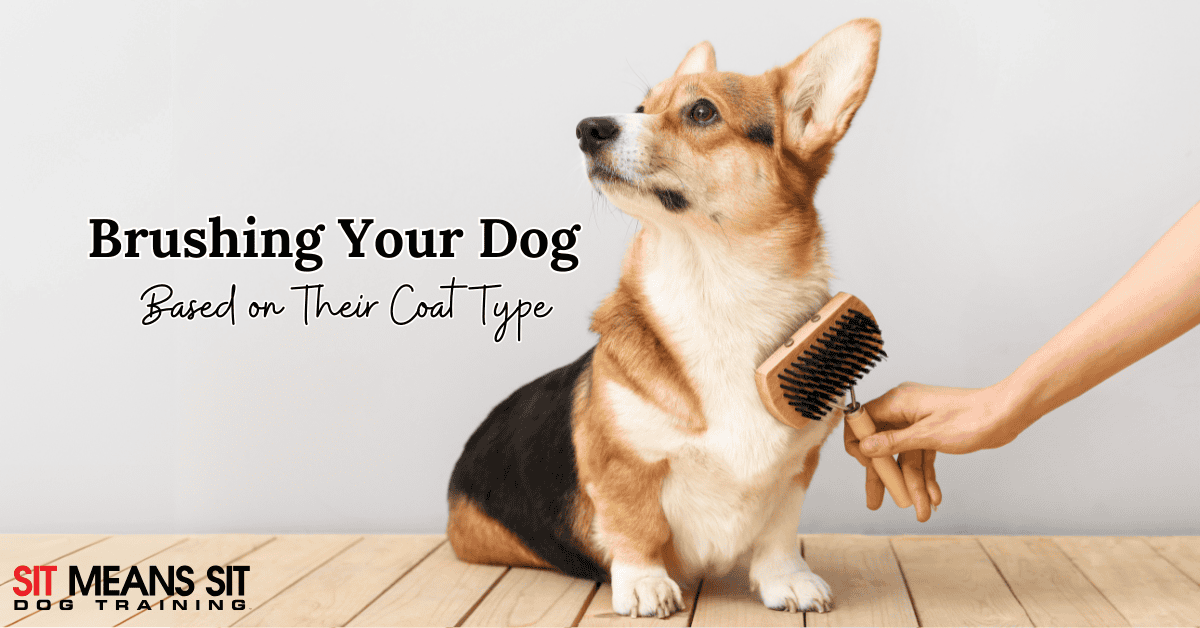One of the most important aspects of dog care is brushing—especially when it comes to maintaining their coats. Not only does regular brushing help prevent mats and tangles, but it also promotes healthy skin, reduces shedding, and keeps your dog looking their best. But did you know that different coat types require different brushing techniques? Canines’ coats can vary greatly in length and texture, so dog brushes aren’t “one size fits all.” Here are some practical tips for brushing your dog based on their coat type.
Short Coats

You may also hear these dogs referred to as being “smooth-coated” since this hair type is both short and smooth. Beagles, Labrador Retrievers, Dachshunds, and Greyhounds are all examples of pups with short coats. Their fur lies close to their body and is often described as being a sleek “second skin” rather than fluffy fur. Dogs with short coats need some extra attention during shedding season—unless you want dog hair to overrun your house!
Overall, short coats are relatively low maintenance. The primary grooming task required for upkeep is brushing their coat a few times a week. The best brush for this type of coat is a curry brush, which is typically made of rubber or plastic. Curry brushes effectively loosen hair and dirt without poking or hurting your pup’s skin. These brushes work well during bathtime, too; once your pup is covered in water and dog-friendly shampoo, dog owners can use a curry brush to remove excess hair.
Medium Coats

Dog breeds with medium coats have fur that’s roughly an inch long, making them a bit fluffier than short-coated dogs. However, longer fur doesn’t necessarily equate to increased shedding. Examples of pups with this type of coat include German Shepherds, Corgis, Golden Retrievers, and Border Collies. Regular brushing is especially important during shedding season if your dog has a double coat since this is when they lose their undercoat. During this time, switch to brushing your pup every day to keep them from being itchy or uncomfortable.
These dogs should be brushed every other day to prevent tangled fur or mats from developing. Use a bristle or slicker brush to brush a pup with a medium coat. Slicker brushes come in multiple sizes, with medium-length teeth being ideal for medium coats. These brushes help distribute your dog’s natural oils throughout their coat, keeping their skin healthy and their fur shiny. They’re effective for a variety of breeds since they loosen knots and remove loose hair.
Long Coats

Pups with long coats can have fur ranging in length anywhere from an inch to fur reaching the floor. Shih Tzu, Maltese, Sheepdog, and Yorkshire Terrier pups are all examples of dogs with long coats. Their luscious locks make these dogs both adorable and wonderful to pet! Some breeds have notably distinctive coats, such as the floor-length coats you’ve likely seen on Afghan Hound or Shih Tzu show dogs.
As you might expect, long coats require a fair amount of maintenance. Experts recommend thoroughly brushing these pups daily to prevent tangles or mats from building up. A pin brush is the ideal type for long fur since it will smooth over Fido’s coat without snagging it. If your pup’s fur has specific knots that you can’t remove with a pin brush, use a dog comb to carefully untangle them.
Curly Coats

Curly-coated dogs include pups with wavy and curly patterns. Canines with curly coats include Poodles, Curly-Coated Retrievers, Bichon Frises, and Portuguese Water Dogs. Breeds characterized as having a curly coat can have a wide range of curl patterns, ranging from the soft waves of the Cocker Spaniel to the tight curls of the Spanish Water Dog. Even dogs of the same breed can have vastly different curl types, which is why grooming a curly-coated dog depends on their unique curl type.
Although dogs with curly coats tend to shed minimally, they are high-maintenance in the grooming department. Curly-coated pups need regular grooming and should be brushed daily. A pin brush is the ideal choice for curly coats, as it detangles curls without damaging them. Before you start brushing, use a doggie detangling spray to avoid hair breakage and make the detangling process easier. If a pin brush isn’t enough, use a slicker brush and a comb to remove any knots at the source.
Wire Coats

Although the fur length of wire-coated dogs is often similar to that of short-coated dogs, the texture of the fur sets these pups apart. Unlike smooth short coats, wire coats feel much rougher and, well, wiry! Examples of breeds with wire coats include Jack Russell Terriers, Schnauzers, and Kerry Blue Terriers.
Many wire-coated dogs do not shed, making these pups’ coats quite unique. The best way to groom dogs with this coat type is to hand-strip the coat, which requires plucking out old, overgrown hairs at the root. This allows new hair growth and keeps your pup’s coat in good shape. Between grooming sessions, plan to brush Fido’s hair every few days. A slicker brush is ideal for a wiry coat, thanks to its short, closely-knit teeth. The fine wires on this type of brush are perfect for removing loose hair and preventing tangles.
Every dog’s coat is different, and understanding what type of grooming routine they need will ensure that you’re doing what’s best for them. Whether your dog has a short, medium, long, curly, or wiry coat, regular brushing is key to maintaining a healthy coat. With the proper tools, knowledge, and patience, you can keep your dog’s coat looking great!
Check Out These Posts for More Grooming Tips!
Essential Tips for Keeping Your Dog’s Coat Healthy

